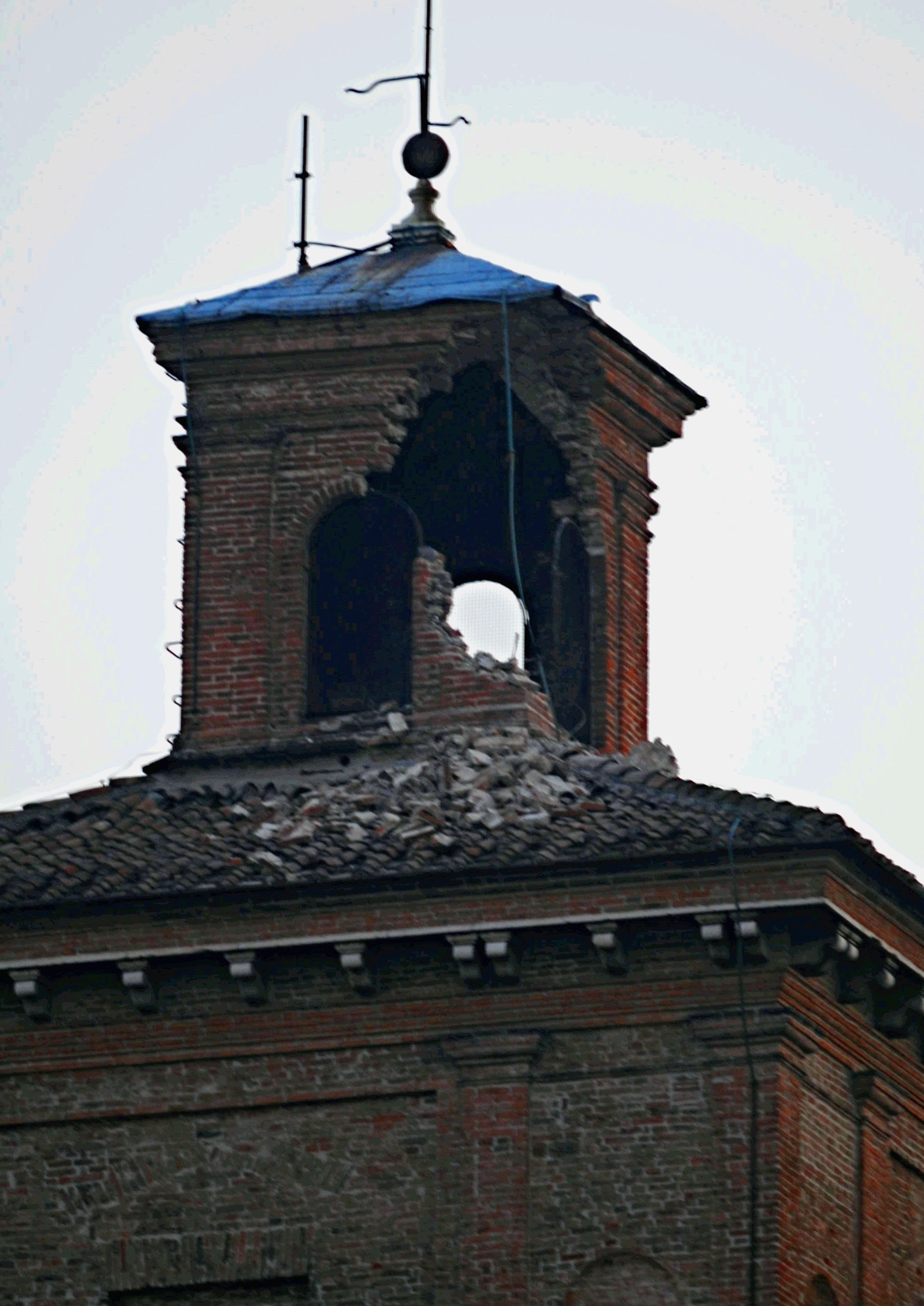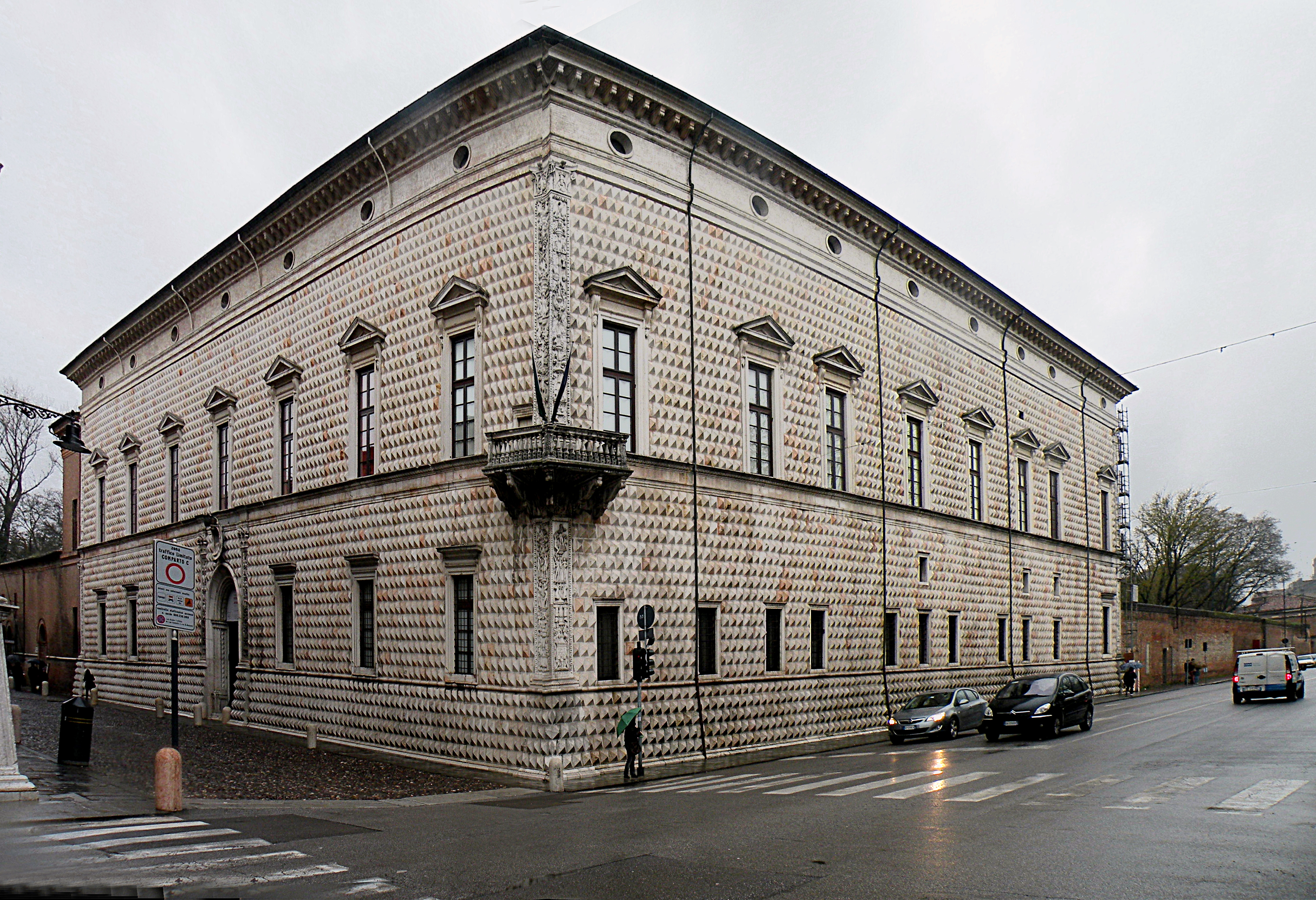|
Pietro Benvenuto Degli Ordini
Pietro Benvenuto degli Ordini of Ferrara (working second half of the 15th century) was the court architect of Borso d'Este, Duke of Ferrara. In the Castello Estense, Ferrara, he was responsible for the courtyard and the splendid external staircase of honour erected in 1481; it dominates the piazza. He was also responsible for the Palazzo Schifanoia, where he was called upon in 1465 to remodel and extend the structure and to develop a ducal apartment on an upper level. At Schifanoia he was succeeded by his assistant Biagio Rossetti Biagio Rossetti ( 1447 – 1516) was an Italian architect and urbanist from Ferrara. A military engineer since 1483, and the ducal architect of Ercole I d'Este, in 1492 Rossetti was assigned the project of enlarging the city of Ferrara. Rossett .... References 15th-century Italian architects Italian Renaissance architects Architects from Ferrara {{Italy-architect-stub ... [...More Info...] [...Related Items...] OR: [Wikipedia] [Google] [Baidu] |
Ferrara
Ferrara (, ; egl, Fràra ) is a city and ''comune'' in Emilia-Romagna, northern Italy, capital of the Province of Ferrara. it had 132,009 inhabitants. It is situated northeast of Bologna, on the Po di Volano, a branch channel of the main stream of the Po River, located north. The town has broad streets and numerous palaces dating from the Renaissance, when it hosted the court of the House of Este. For its beauty and cultural importance, it has been designated by UNESCO as a World Heritage Site. History Antiquity and Middle Ages The first documented settlements in the area of the present-day Province of Ferrara date from the 6th century BC. The ruins of the Etruscan town of Spina, established along the lagoons at the ancient mouth of Po river, were lost until modern times, when drainage schemes in the Valli di Comacchio marshes in 1922 first officially revealed a necropolis with over 4,000 tombs, evidence of a population centre that in Antiquity must have played a major rol ... [...More Info...] [...Related Items...] OR: [Wikipedia] [Google] [Baidu] |
Borso D'Este
Borso d'Este, attributed to Vicino da Ferrara, Pinacoteca of the Castello Sforzesco">Sforza Castle in Milan, Italy. Borso d'Este (1413 – August 20, 1471) was Duke of Ferrara, and the first Duchy of Modena and Reggio, Duke of Modena, which he ruled from 1450 until his death. He was a member of the House of Este. Biography He was an illegitimate son of Niccolò III d'Este, Marquess of Ferrara, Modena and Reggio, and his mistress Stella de' Tolomei. Borso succeeded his brother Leonello d'Este in the marquisate on October 1, 1450. left, 220px, A page of Borso d'Este's Bible. On May 18, 1452 he received confirmation over his fiefs, as Duke, by Emperor Frederick III. On April 12, 1471, in St. Peter's Basilica, he was also appointed as Duke of Ferrara by Pope Paul II. Borso followed an expansionist policy for his state, and one of ennobling for his family. He was generally allied with the Republic of Venice, and enemy both to Francesco I Sforza and the Medici family. These riva ... [...More Info...] [...Related Items...] OR: [Wikipedia] [Google] [Baidu] |
Duke Of Ferrara
Emperor Frederick III conferred Borso d'Este, Lord of Ferrara, with the Duchy of Modena and Reggio in 1452, while Pope Paul II formally elevated him in 1471 as Duke of Ferrara, over which the family had in fact long presided. This latter territory was lost to the Papal States in 1597, while the House of Este continued to rule the Duchy of Modena and Reggio in the Emilia region until 1796, when it became part of Napoleon Bonaparte's Cispadane Republic. In 1814, the duchy was restored under the Habsburg grandson of the last Este duke, continuing until it was annexed by Piedmont-Sardinia in 1859. From the Lordship of Este to the Duchy of Ferrara-Modena-Reggio House of Este The line of Marquesses of Este (''Marchesi d'Este'') rose in 1039 with Albert Azzo II, Margrave of Milan. The name "Este" is related to the city where the family came from, Este. The family was founded by Adalbert the Margrave, who might have been the true first Margrave of Milan of this family. In 1209, Azzo V ... [...More Info...] [...Related Items...] OR: [Wikipedia] [Google] [Baidu] |
Castello Estense
The ' (‘ Este castle’) or ' (‘St. Michael's castle’) is a moated medieval castle in the center of Ferrara, northern Italy. It consists of a large block with four corner towers. History On 3 May 1385, the Ferrarese people, driven to desperation by taxes and flooding that had brought ruin upon them, took themselves to the Marquis Niccolò II d'Este’s palace to ask the advice of Tommaso da Tortona, the high official held to be responsible for this grave situation. Nicolò tried to calm the revolt all day, but by the evening it was clear that the people's spirits were getting more and more angry and that the very safety of the Estensi was endangered. The order was therefore given to summon the disgraced Tommaso, who was given confession and communion and then given to the crowd, who literally tore him to pieces. This episode, which resulted later in the death of the leaders of the revolt, convinced the Marquis that the family's palace (which is now the Palazzo Comunale) ... [...More Info...] [...Related Items...] OR: [Wikipedia] [Google] [Baidu] |
Palazzo Schifanoia
Palazzo Schifanoia is a Renaissance palace in Ferrara, Emilia-Romagna (Italy) built for the Este family. The name "Schifanoia" is thought to originate from "schivar la noia" meaning literally to "escape from boredom" which describes accurately the original intention of the palazzo and the other villas in close proximity where the Este court relaxed. The highlights of its decorations are the allegorical frescoes with details in tempera by or after Francesco del Cossa and Cosmè Tura, executed ca 1469–70, a unique survival of their time. This palace forms part of a catalogue of pleasure palaces for the Este family, including the following: *Delizia di Belriguardo a Voghiera *Delizia del Verginese a Portomaggiore *Castello di Mesola a Mesola *Villa della Mensa a Sabbioncello San Vittore *Delizia di Benvignante ad Argenta, Italy The ''Palace of Belfiore'' which once held the Studiolo of the Palazzo Belfiore, no longer exists. History The palace had its origins in a si ... [...More Info...] [...Related Items...] OR: [Wikipedia] [Google] [Baidu] |
Biagio Rossetti
Biagio Rossetti ( 1447 – 1516) was an Italian architect and urbanist from Ferrara. A military engineer since 1483, and the ducal architect of Ercole I d'Este, in 1492 Rossetti was assigned the project of enlarging the city of Ferrara. Rossetti is considered the first architect in the history of urbanistics to make use of the advantages of the modern methods: balancing the humanistic principles in architecture, the real needs of the city, and local traditions. Beginning in 1492, he projected and directed construction of the defense walls around the city. The Diamond Palace is perhaps the most famous of his buildings. After Ercole's death in 1505, Rossetti served the Cardinal Ippolito d'Este, in which role he was responsible for the creation of many notable palazzi and church Church may refer to: Religion * Church (building), a building for Christian religious activities * Church (congregation), a local congregation of a Christian denomination * Church service, a form ... [...More Info...] [...Related Items...] OR: [Wikipedia] [Google] [Baidu] |
15th-century Italian Architects
The 15th century was the century which spans the Julian dates from 1 January 1401 ( MCDI) to 31 December 1500 ( MD). In Europe, the 15th century includes parts of the Late Middle Ages, the Early Renaissance, and the early modern period. Many technological, social and cultural developments of the 15th century can in retrospect be seen as heralding the "European miracle" of the following centuries. The architectural perspective, and the modern fields which are known today as banking and accounting were founded in Italy. The Hundred Years' War ended with a decisive French victory over the English in the Battle of Castillon. Financial troubles in England following the conflict resulted in the Wars of the Roses, a series of dynastic wars for the throne of England. The conflicts ended with the defeat of Richard III by Henry VII at the Battle of Bosworth Field, establishing the Tudor dynasty in the later part of the century. Constantinople, known as the capital of the world an ... [...More Info...] [...Related Items...] OR: [Wikipedia] [Google] [Baidu] |
Italian Renaissance Architects
Italian(s) may refer to: * Anything of, from, or related to the people of Italy over the centuries ** Italians, an ethnic group or simply a citizen of the Italian Republic or Italian Kingdom ** Italian language, a Romance language *** Regional Italian, regional variants of the Italian language ** Languages of Italy, languages and dialects spoken in Italy ** Italian culture, cultural features of Italy ** Italian cuisine, traditional foods ** Folklore of Italy, the folklore and urban legends of Italy ** Mythology of Italy, traditional religion and beliefs Other uses * Italian dressing, a vinaigrette-type salad dressing or marinade * Italian or Italian-A, alternative names for the Ping-Pong virus, an extinct computer virus See also * * * Italia (other) * Italic (other) * Italo (other) * The Italian (other) * Italian people (other) Italian people may refer to: * in terms of ethnicity: all ethnic Italians, in and outside of Italy * in ... [...More Info...] [...Related Items...] OR: [Wikipedia] [Google] [Baidu] |




